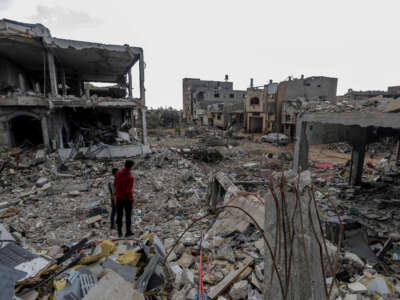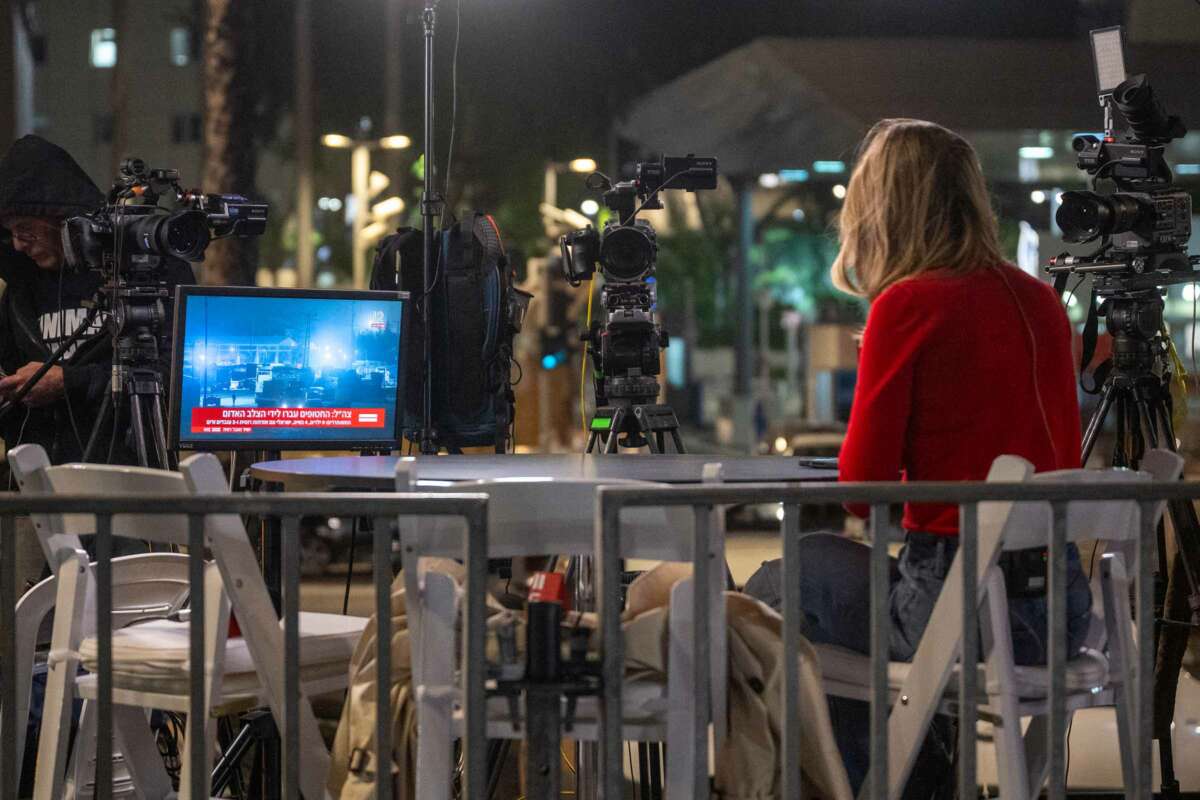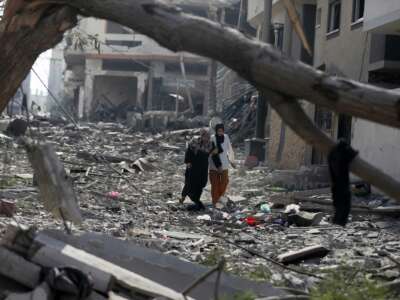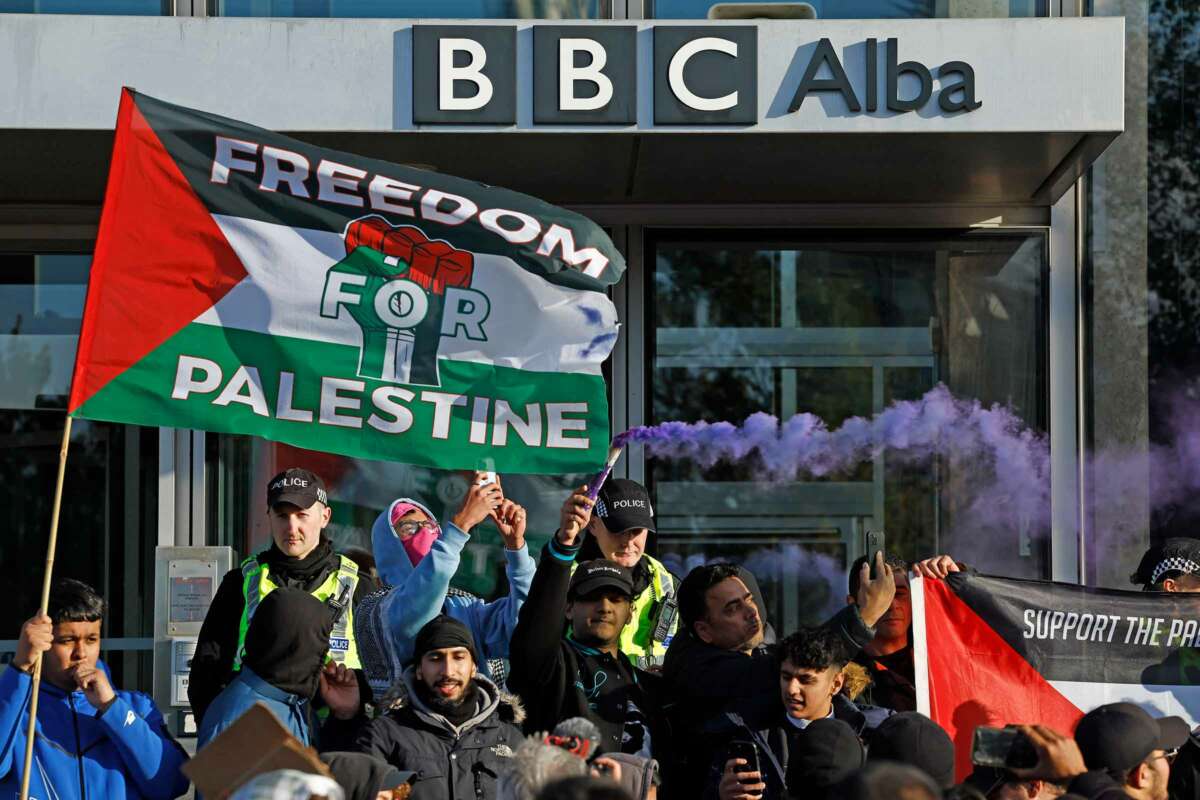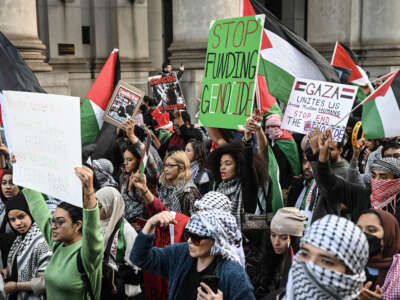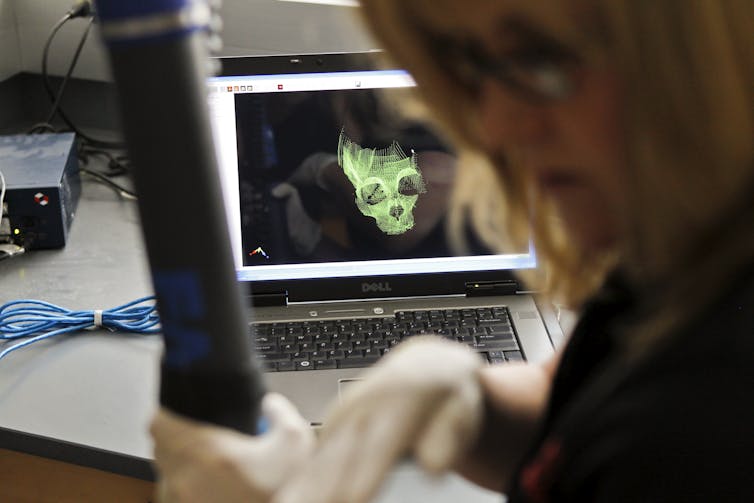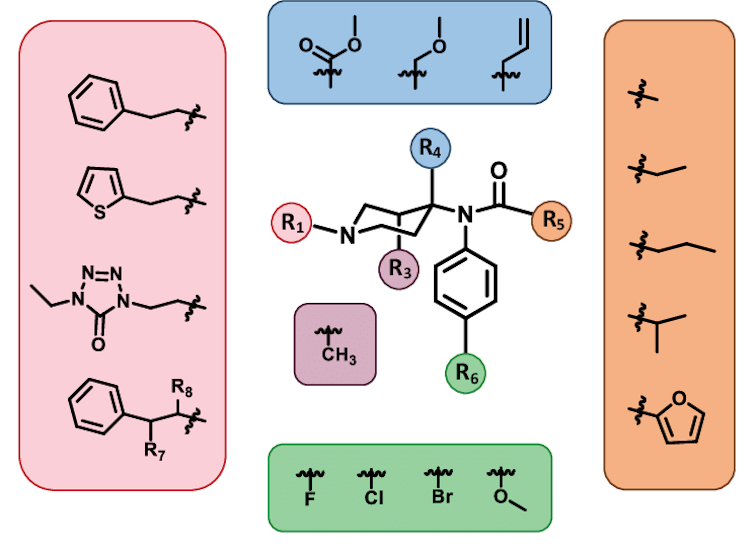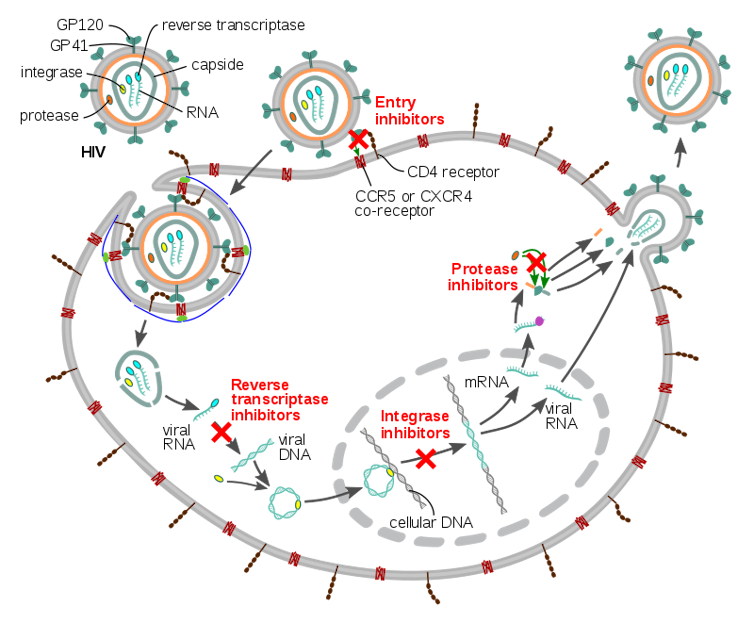A lasting peace can only be achieved when the legitimate rights and grievances of Palestinians are addressed.
By Michel Moushabeck ,
November 28, 2023
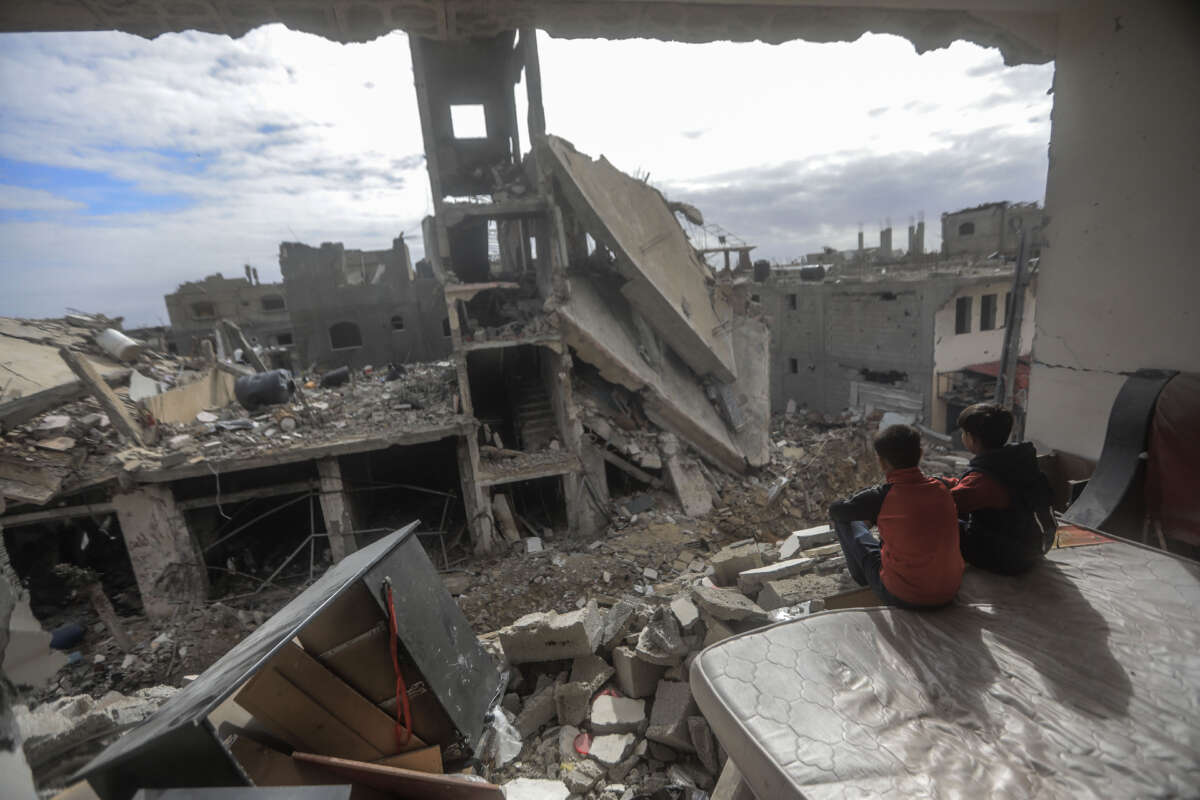
Palestinian children, sitting in a destroyed house, look at ruins during the temporary ceasefire between Israel and Hamas, in the village of Khuza'a near the border fence between Israel and the southern Gaza Strip on November 28, 2023.
MOHAMMED TALATENE / PICTURE ALLIANCE VIA GETTY IMAGES
Like many Palestinians, I’ve been glued to the news during the past 50 days following Israel’s senseless, illegal and immoral genocide in Gaza. Our eyes are filled with painful and horrific images showing massive death and devastation wrought on innocent civilians who lost loved ones — entire families in some cases — homes and dreams. I’ve also watched the terror being inflicted by Israeli soldiers and armed settlers on Palestinians in the West Bank and East Jerusalem that resulted in the death of 240 Palestinians, 52 of them children, with more than 2,959 injured since October 7.
UNICEF recently warned world leaders about the catastrophic impact of the Israeli bombardment on children and families. “Children are dying at an alarming rate — more than 5,000 have reportedly been killed and thousands more injured. Well over 1.7 million people in the Gaza Strip have been displaced — half of them children,” it reported. “They’re running out of water, food, fuel and medicine. Their homes have been destroyed; their families torn apart.” Doctors Without Borders described the humanitarian situation in Gaza as “dire.” The desperately needed aid trucks that have recently been allowed into Gaza are insufficient for dealing with a humanitarian catastrophe of this magnitude.
Pope Francis also spoke about the humanitarian catastrophe in Gaza during his Wednesday general audience in St. Peter’s Square on November 22. He said: “We have gone beyond wars. This is not war. This is terrorism.” He made his comments hours after an agreement was reached between Israel and Hamas for a four-day “humanitarian pause” and a reciprocal exchange of women and child hostages/prisoners.
The four-day, Qatar-mediated “humanitarian pause” that allowed for 50 Israeli hostages and 150 Palestinian captives to be reunited with their families was a welcome reprieve from the relentless bombardment for the people of Gaza. Now extended for two additional days, the temporary truce means that 20 more Israeli captives and 60 Palestinian captives will be released. The United Nations secretary general called this short respite “a glimpse of hope and humanity” as he made an appeal to the Israeli government to open extra passage points for the entry of humanitarian aid into Gaza. At the moment, aid trucks are only allowed to enter Gaza through the Rafah crossing on the border with Egypt.
This temporary “pause” — or “pauses,” if they continue to be extended for additional days — is not a permanent ceasefire. It will not bring safety to the people of Gaza; nor will it alleviate their suffering or lessen their grief. It is maddening to think that it took six weeks to arrive at this “pause.” Even during this brief “pause,” Israeli soldiers killed at least eight Palestinians in the West Bank towns of Jenin, Al-Bireh and Yatma, south of Nablus. Moreover, Israel intends to resume its attacks when the pause expires; as Prime Minister Benjamin Netanyahu stated clearly: “We are at war, and we’ll continue the war until we achieve all our goals: to destroy Hamas, return all our hostages, and ensure that nobody in Gaza can threaten Israel.”
Even if the international community’s mounting pressure prevents such a calamity and brings about a permanent ceasefire, it will not end the suffocating siege that caged Palestinians in Gaza for close to 17 years and got us to where we are now. It will not bring safety, security and lasting peace to Israelis and Palestinians; it will not end the 56-year Israeli occupation or the Palestinian resistance to it; and it will not change the apartheid system that privileges one people over another, uses a brutal form of collective punishment, and denies the rights of Palestinians to freedom and equality. In short, it will not change the status quo.
While Israel’s officially declared objective is the destruction of the Palestinian resistance movement Hamas, many in the Netanyahu government want to see the Gaza Strip emptied of all its inhabitants. In a November 19 article in The Jerusalem Post, Israeli Intelligence Minister Gila Gamliel advocated for “the voluntary resettlement of Palestinians in Gaza, for humanitarian reasons, outside of the Strip.” Note how Israel wants you to believe that it is only proposing the transfer of Palestinians out of Gaza to the Sinai desert “for humanitarian reasons” — because Israeli leaders want you to believe that they care deeply about Palestinians’ safety and well-being.
Like many Palestinians, I’ve been glued to the news during the past 50 days following Israel’s senseless, illegal and immoral genocide in Gaza. Our eyes are filled with painful and horrific images showing massive death and devastation wrought on innocent civilians who lost loved ones — entire families in some cases — homes and dreams. I’ve also watched the terror being inflicted by Israeli soldiers and armed settlers on Palestinians in the West Bank and East Jerusalem that resulted in the death of 240 Palestinians, 52 of them children, with more than 2,959 injured since October 7.
UNICEF recently warned world leaders about the catastrophic impact of the Israeli bombardment on children and families. “Children are dying at an alarming rate — more than 5,000 have reportedly been killed and thousands more injured. Well over 1.7 million people in the Gaza Strip have been displaced — half of them children,” it reported. “They’re running out of water, food, fuel and medicine. Their homes have been destroyed; their families torn apart.” Doctors Without Borders described the humanitarian situation in Gaza as “dire.” The desperately needed aid trucks that have recently been allowed into Gaza are insufficient for dealing with a humanitarian catastrophe of this magnitude.
Pope Francis also spoke about the humanitarian catastrophe in Gaza during his Wednesday general audience in St. Peter’s Square on November 22. He said: “We have gone beyond wars. This is not war. This is terrorism.” He made his comments hours after an agreement was reached between Israel and Hamas for a four-day “humanitarian pause” and a reciprocal exchange of women and child hostages/prisoners.
The four-day, Qatar-mediated “humanitarian pause” that allowed for 50 Israeli hostages and 150 Palestinian captives to be reunited with their families was a welcome reprieve from the relentless bombardment for the people of Gaza. Now extended for two additional days, the temporary truce means that 20 more Israeli captives and 60 Palestinian captives will be released. The United Nations secretary general called this short respite “a glimpse of hope and humanity” as he made an appeal to the Israeli government to open extra passage points for the entry of humanitarian aid into Gaza. At the moment, aid trucks are only allowed to enter Gaza through the Rafah crossing on the border with Egypt.
This temporary “pause” — or “pauses,” if they continue to be extended for additional days — is not a permanent ceasefire. It will not bring safety to the people of Gaza; nor will it alleviate their suffering or lessen their grief. It is maddening to think that it took six weeks to arrive at this “pause.” Even during this brief “pause,” Israeli soldiers killed at least eight Palestinians in the West Bank towns of Jenin, Al-Bireh and Yatma, south of Nablus. Moreover, Israel intends to resume its attacks when the pause expires; as Prime Minister Benjamin Netanyahu stated clearly: “We are at war, and we’ll continue the war until we achieve all our goals: to destroy Hamas, return all our hostages, and ensure that nobody in Gaza can threaten Israel.”
Even if the international community’s mounting pressure prevents such a calamity and brings about a permanent ceasefire, it will not end the suffocating siege that caged Palestinians in Gaza for close to 17 years and got us to where we are now. It will not bring safety, security and lasting peace to Israelis and Palestinians; it will not end the 56-year Israeli occupation or the Palestinian resistance to it; and it will not change the apartheid system that privileges one people over another, uses a brutal form of collective punishment, and denies the rights of Palestinians to freedom and equality. In short, it will not change the status quo.
While Israel’s officially declared objective is the destruction of the Palestinian resistance movement Hamas, many in the Netanyahu government want to see the Gaza Strip emptied of all its inhabitants. In a November 19 article in The Jerusalem Post, Israeli Intelligence Minister Gila Gamliel advocated for “the voluntary resettlement of Palestinians in Gaza, for humanitarian reasons, outside of the Strip.” Note how Israel wants you to believe that it is only proposing the transfer of Palestinians out of Gaza to the Sinai desert “for humanitarian reasons” — because Israeli leaders want you to believe that they care deeply about Palestinians’ safety and well-being.
Officials announced on Monday that the pause will be extended by two days.By Sharon Zhang , TRUTHOUT November 27, 2023
Will Israel Be Allowed to Proceed With a Second Nakba?
The U.S. and its Western allies fail to see the real plan, which is no longer a secret: the ethnic cleansing of Gaza and the transfer of Palestinians to Sinai. It was leaked a few weeks ago and later confirmed by Egyptian President Abdel Fattah El-Sisi when he spoke of the Israeli attempts to pressure Egypt into accepting the 2.3 million Palestinians into Sinai. Ordering half the population of Gaza to be evacuated to the south, as Israel wiped out neighborhoods and flattened buildings, was the first phase of the transfer strategy to depopulate Gaza. Israel has already announced that displaced Palestinians are not allowed to return to their homes in northern Gaza, which has become a near-total wasteland.
Depriving the Palestinians in Gaza of access to food, water, fuel, electricity and medical supplies will undoubtedly cause the death toll to rise to a level far greater than the more than 14,000 deaths caused by Israeli airstrikes since October 8. The humanitarian disaster has reached terrifying levels with a near-total collapse of Gaza’s health care system due to the destruction of Gaza’s medical facilities, forced closure of and evacuation of hospitals, and the severe shortages of medical supplies in others. Squeezing the 2.3 million inhabitants of Gaza — already living in one of the most densely populated places on Earth — into the southern part of the Strip will no doubt expose the population to an array of diseases.
The U.S. and its Western allies fail to see the real plan, which is no longer a secret: the ethnic cleansing of Gaza and the transfer of Palestinians to Sinai. It was leaked a few weeks ago and later confirmed by Egyptian President Abdel Fattah El-Sisi when he spoke of the Israeli attempts to pressure Egypt into accepting the 2.3 million Palestinians into Sinai. Ordering half the population of Gaza to be evacuated to the south, as Israel wiped out neighborhoods and flattened buildings, was the first phase of the transfer strategy to depopulate Gaza. Israel has already announced that displaced Palestinians are not allowed to return to their homes in northern Gaza, which has become a near-total wasteland.
Depriving the Palestinians in Gaza of access to food, water, fuel, electricity and medical supplies will undoubtedly cause the death toll to rise to a level far greater than the more than 14,000 deaths caused by Israeli airstrikes since October 8. The humanitarian disaster has reached terrifying levels with a near-total collapse of Gaza’s health care system due to the destruction of Gaza’s medical facilities, forced closure of and evacuation of hospitals, and the severe shortages of medical supplies in others. Squeezing the 2.3 million inhabitants of Gaza — already living in one of the most densely populated places on Earth — into the southern part of the Strip will no doubt expose the population to an array of diseases.
Palestinians Are Being Killed by Starvation, Dehydration and Disease
In a piece published in the Israeli daily Yedioth Ahronoth on November 22, Giora Eiland, a decorated former head of the Israeli military’s Operations and Planning Division and former head of the National Security Council, proposed disease as an effective method of killing the Palestinian people in Gaza. He wrote: “After all, severe epidemics in the southern Strip will bring victory closer and reduce fatalities among IDF soldiers.” The day after Eiland wrote about his proposal, Israeli journalist Gideon Levy published a piece in Haaretz headlined: “Giora Eiland’s Monstrous Gaza Proposal Is Evil in Plain Sight.”
Whatever plan is underway, it will surely be conducted with the full support of the U.S. government and the blessing of President Joe Biden, who said that Israel has the right to resume its assault on Gaza — although he urged the Israeli prime minister to try to minimize civilian casualties. In a Washington Post op-ed, Biden portrayed Israel’s devastating military assault as a war for democracy and erased the context of 75 years of Palestinian resistance against Israeli occupation, apartheid and oppression.
Will Israel Resume Its Imprisonment of Palestinians Soon After the Exchange Has Been Completed?
The 150 prisoners that Israel agreed to release as part of its deal with Hamas and the 60 that will be released as a result of the two-day truce extension are only a small fraction of the 7,200 imprisoned Palestinian hostages languishing in Israeli jails. Since October 7, Israel has drastically escalated its raids on Palestinians in the West Bank and arrested more than 3,000, according to the Palestinian Prisoners’ Club, an advocacy group. But even if you don’t trust Palestinian sources and only want to believe the figure of 1,850 new arrests reported by The New York Times, you’ll still be able to see how this number compares with the number of hostages Hamas took on October 7 or the small number Israel agreed to release in the hostage/prisoner exchange.
Every Palestinian family I know has had one or more of its members detained by the Israeli authorities, many of them teenagers accused of throwing stones at Israeli soldiers. About 200 boys, most of them teenagers, were in Israeli detention as of last week, along with about 75 women and five teenage girls, according to Addameer, a Palestinian prisoners’ rights group. Administrative detention, a practice of holding detainees indefinitely without a charge or trial — which Israel claims is an effective counterterrorism measure — is a tool of repression that has long been used by the Israeli state to instill fear among Palestinians and stop them from demanding or exercising their rights. Human rights groups, including Israel’s B’Tselem, and the UN have concluded that Israel’s use of administrative detention is a blatant violation of international law.
Israel is the only developed country in the world that prosecutes minors as young as 12 in military courts. The most common charge is stone-throwing, carrying a 20-year prison sentence. The United Nations estimates that since Israel occupied the West Bank, Gaza and East Jerusalem in 1967, it has detained “approximately one million Palestinians in the occupied territory, including tens of thousands of children.”
There Is No Military Solution to the Palestine/Israel Crisis
No matter how superior an army, navy and air force Israel has; no matter how much destruction, devastation and human suffering it can wreak on Palestinian civilians; and no matter how many UN vetoes the U.S. uses to shield Israel from accountability, it will not succeed in suppressing the Palestinian people’s quest for freedom and equality. It will not be able to crush their determination to continue their resistance until their freedom is achieved.
In the absence of justice, there will be protests, riots and intifadas. The tide is turning and Palestinians today have greater support globally — especially among the younger generation — than ever before. I am in awe of thousands of young protesters who are organizing and coming together in this critical moment in Middle East history. The massive protests in major cities and on university campuses around the world have shown us “youth power” in numbers we have not seen before. Palestinians have also received overwhelming support and recognition of the State of Palestine among members of the UN General Assembly, and especially among countries of the Global South. It is only the U.S. (and a handful of allies) that has always used its veto power to prevent any resolution condemning Israeli actions.
The current system of apartheid is not sustainable. The sooner the Israeli government — and its enablers the U.S., U.K. and EU — accept the fact that Israeli safety and security cannot be achieved by military force, the better the chances of a negotiated settlement become. A lasting peace can only be achieved when the legitimate rights and grievances of the Palestinians are addressed. Palestinians will not give up on their aspiration of living in their homes, on their land, in dignity, equality, and without fear.
November 29 is the 46th anniversary of the United Nations’ International Day of Solidarity with the Palestinian people. On this day in 2012, the General Assembly voted overwhelmingly — 138 in favor to 9 against — to accord Palestine “Non-Member Observer State” status at the United Nations.
In his message issued in advance of tomorrow’s International Day of Solidarity with the Palestinian people, the UN secretary general said, “[T]his is a day for reaffirming international solidarity with the Palestinian people and their right to live in peace and dignity.” He added:
It is long past time to move in a determined, irreversible way towards a two-State solution, on the basis of United Nations resolutions and international law, with Israel and Palestine living side-by-side in peace and security with Jerusalem as the capital of both States.
The United Nations will not waver in its commitment to the Palestinian people. Today and every day, let us stand in solidarity with the aspirations of the Palestinian people to achieve their inalienable rights and build a future of peace, justice, security and dignity for all.
For over five decades, the United States has acted as an obstacle to peace — denying Palestinians their rights. Since October 7, the U.S. has continued to be a major hurdle to saving lives, refusing to demand an immediate ceasefire. The U.S. can no longer play the role of honest broker in any future negotiations to resolve the crisis and achieve a lasting peace in the region. In order to have a negotiated settlement that would allow Israelis and Palestinians to live in peace and security — in a homeland free from apartheid and oppression — this task now needs to be taken up solely by the United Nations.
Copyright © Truthout.
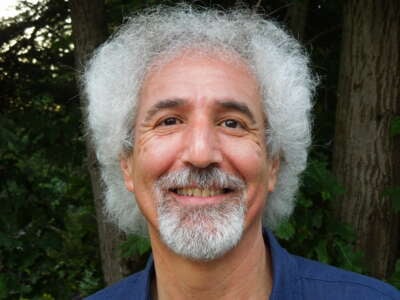
MICHEL MOUSHABECK is a Palestinian American writer, editor, translator and musician. He is the founder and publisher of Interlink Publishing, a 36-year-old, Massachusetts-based, independent publishing house. Follow him on Instagram: @ReadPalestine.
ia Email
More
PART OF THE SERIES
Struggle and Solidarity: Writing Toward Palestinian Liberation
…
